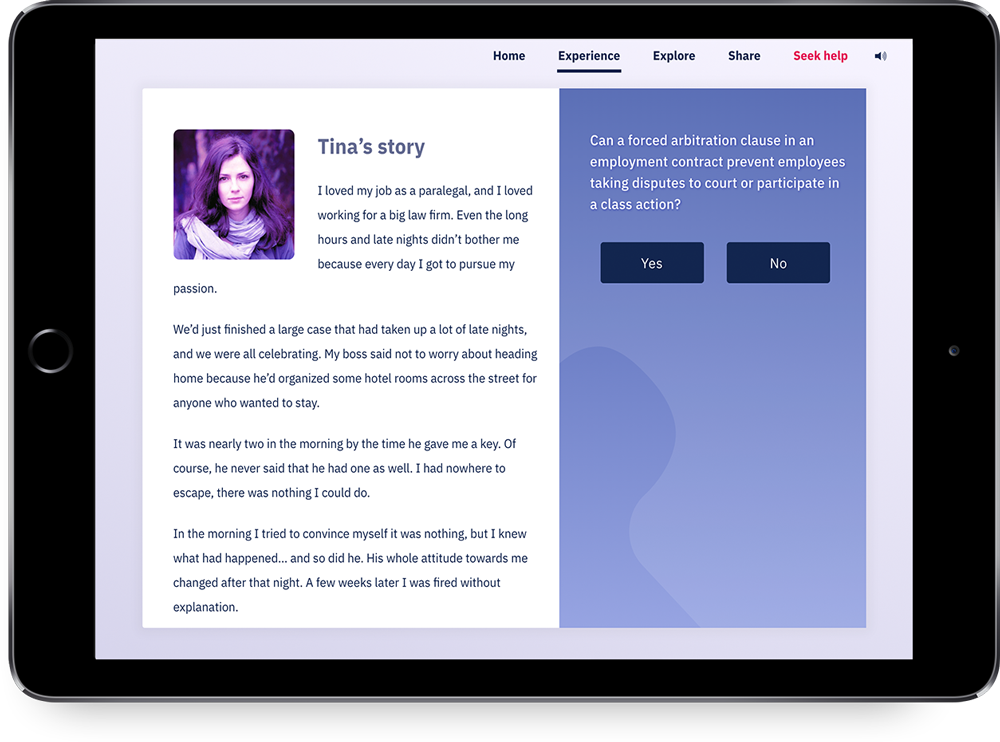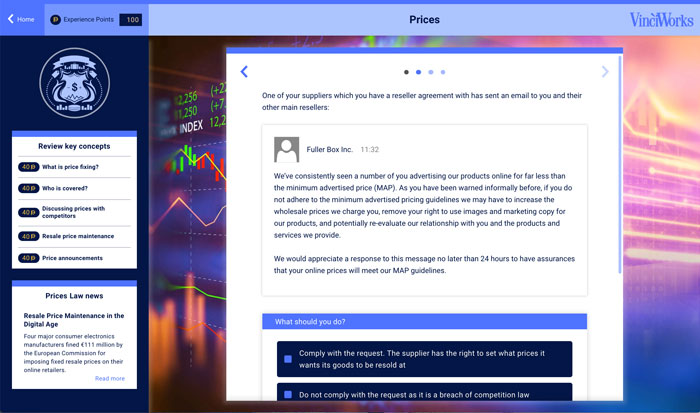Tackling sexual harassment – the first step is to recognise the problem

In the wake of the #MeToo movement, have men finally begun to grasp how widespread the issue of sexual harassment against women is? The answer seems to be no, according to a new study which reflects how much men in the U.S.— and 12 European countries, including Britain — underestimate levels of harassment against women. While […]
VinciWorks by the numbers: 2018 – a year in review
2018 was another momentous year from VinciWorks. Our team continued to innovate and exceed our targets with new courses and product updates, as well as creating new guides and policy templates to help businesses stay on the right side of compliance. Here are some of the highlights from 2018. 420,000course completions We continued to deliver […]
New course release – Competition Law: Know Your Market

VinciWorks has just released a new course as part of its Market Rules series. Competition Law: Know Your Market drops users into a set of immersive scenarios to test their knowledge, understanding and ability to comply with UK competition law. The course is broken into short modules that cover different aspects of UK competition law, […]
Tabletop exercises – What do you mean I’m on the Business Continuity team?

The unthinkable has happened and you’re busy gathering your business continuity team together to manage the incident. You pop your head around the door to the Head of HR and they say they have no idea that they’re meant to be on the team. The Head of Legal says the same. You’re already in a […]
On-demand webinar – Understanding the SRA Regulatory Reforms

The Solicitors Regulatory Authority (SRA) has been finalising a package of reforms designed to provide solicitors and law firms with greater flexibility over how they operate, making legal services more accessible to the public. These include the new Price Transparency Rules set to be introduced on 6 December 2018, the Insurance Distribution Directive and reforms […]
Sexual harassment training tailored for New York firms

The headline is sadly too familiar. We’re told how many more victims have now come forward since the first allegation of sexual misconduct against the previously well-respected celebrity. Victims who knew the perpetrator in a professional capacity with accounts that stretch back to when they, now in the twilight of their career, were in their […]
Is your Workplace Safe during Periods of Extreme Weather?
As the next cold snap looms, we’re looking at the tricky topic of temperatures in the workplace – and the impacts that extreme spells of hot and cold can have on employees. Before we look at the challenge of cold workplaces, it’s worth noting that MPs recently rejected requests to create a law to define […]
Competition Law – Understanding price fixing

Retail Competition Law Competition law is a series of rules and regulations which seeks to maintain fair competition in an open market and regulate anti-competitive conduct by companies. One of the key aspects of competition law is price fixing. This is an illegal activity that can result in huge fines, criminal convictions and imprisonment. What […]






